How to Choose a Living Room Rug — 12 Fail-Safe Strategies from Designers
Interiors pros share their expertise on selecting an area rug that complements the room perfectly
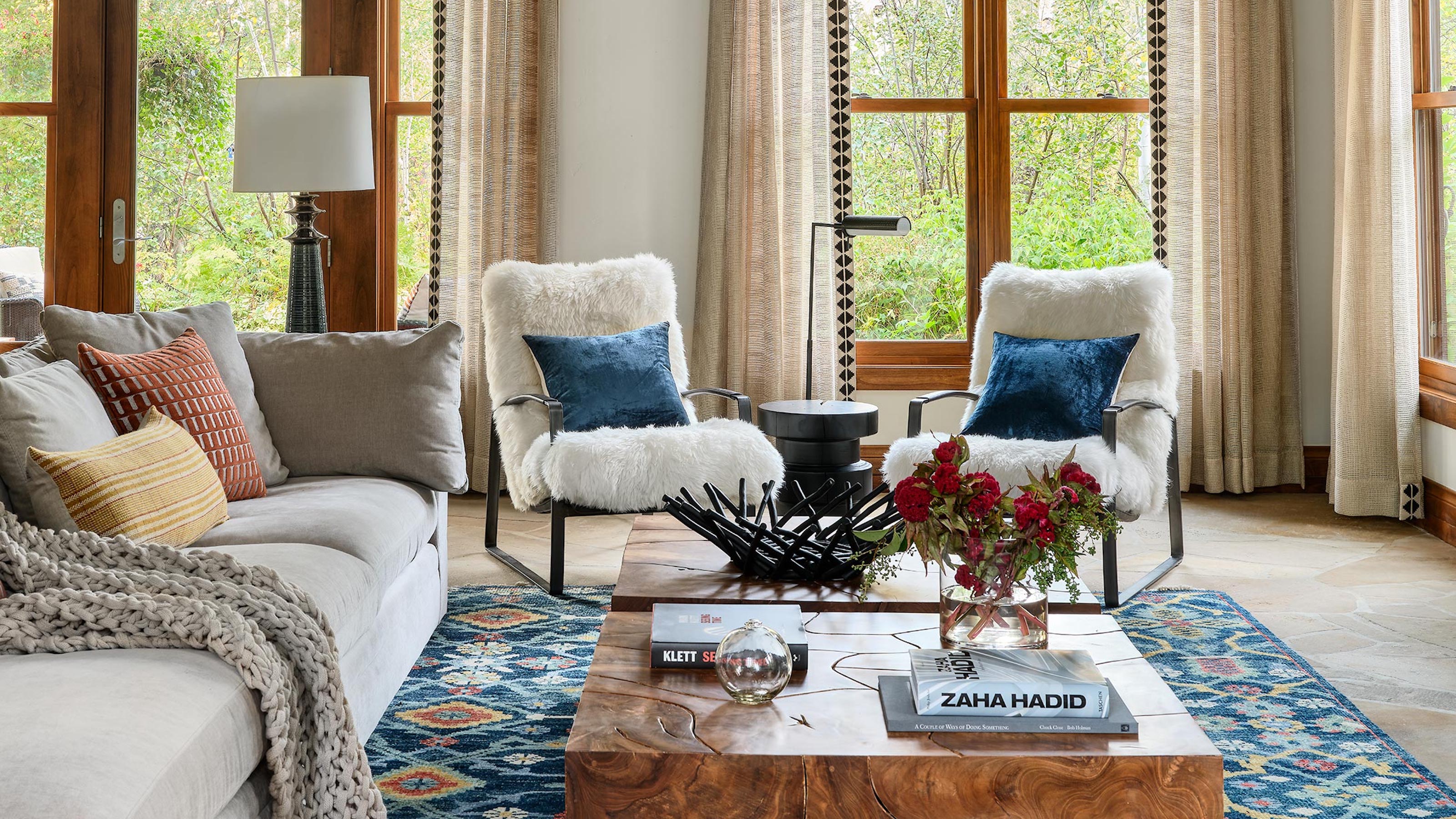

Jacky Parker
The right rug will anchor a room, adding texture, color, and pattern, and picking a rug you love on all three counts doesn’t seem as if it should be a challenge. But there’s more to it. Knowing how to choose a living room rug successfully involves understanding the host of elements that all help determine the impression it makes.
Whether it’s woven or printed, its pile type, how its fibers stand up to wear, the size and shape, and how it complements the remainder of the room’s design are all among the factors to consider so it’s a choice you’ll love for years to come.
Getting savvy about each of the elements that contribute to a winning rug choice needn’t be complicated, though. We asked interior designers to outline exactly what you should take into account for picking the best rug, so it’s aesthetically pleasing and durable enough for your lifestyle.
How to choose a living room rug
1. Consider the starting point
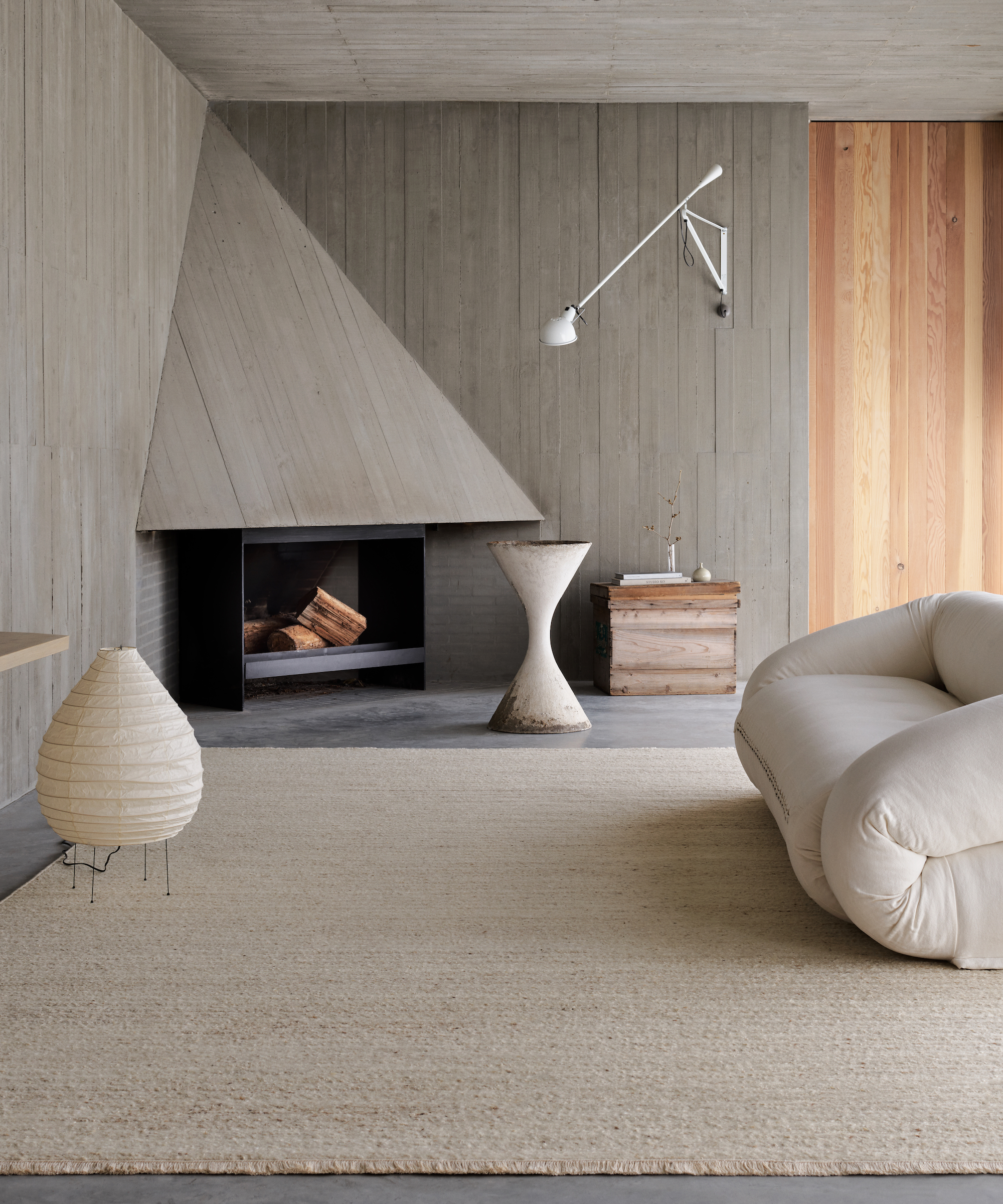
The rug is part of the living room design as a whole, but it can be worth thinking about the rug first.
“Oftentimes customers will choose furniture then later try to find a rug that complements,” says Jodie Fried, co-founder of luxury rug brand Armadillo. “We recommend choosing your furnishings and rug in tandem and putting all your ideas on a moodboard (see below) — this makes it easier to assess how different materials, colors, textures, and details sit together.”
However, if it’s not the starting point, a rug can complement what’s already there and even help pull together the room, including if you pick a statement rug design. “If there’s a design element in a room that just doesn’t feel connected to the other pieces, a rug can tie them together,” explains Armadillo co-founder Sally Pottharst. “You’d be surprised how a rug bold in color, weave, or texture can create that beautiful transition from floor to furniture.”
Wayfair's selection of neutral rugs includes many items that look similar to the one shown above.
Be The First To Know
The Livingetc newsletters are your inside source for what’s shaping interiors now - and what’s next. Discover trend forecasts, smart style ideas, and curated shopping inspiration that brings design to life. Subscribe today and stay ahead of the curve.
2. Think rug fibers and texture

It’s worth thinking about what the rug should be made from to stand up to life in your home.
“Traditionally we see rugs composed of natural materials like wools and silks but oftentimes families with children or households with dogs consider synthetic materials for a more durable rug,” says Katie Siegel, lead designer at Rumor Designs.
“That said, flatweaves or indoor/outdoor durable rugs do not have the same soft to the touch feel that traditionally made rugs do, so that is something to consider.”
And, bear in mind that what feels pleasant to the hands may feel different underfoot, points out interior designer and rug specialist Ally-Catherine Trenary, founder of home decor brand June St George. “Natural materials, like wool, especially high-quality options like New Zealand wool, offer durability and comfort,” she says.
There is also a great selection of wool area rugs on Wayfair.
3. Look at pile
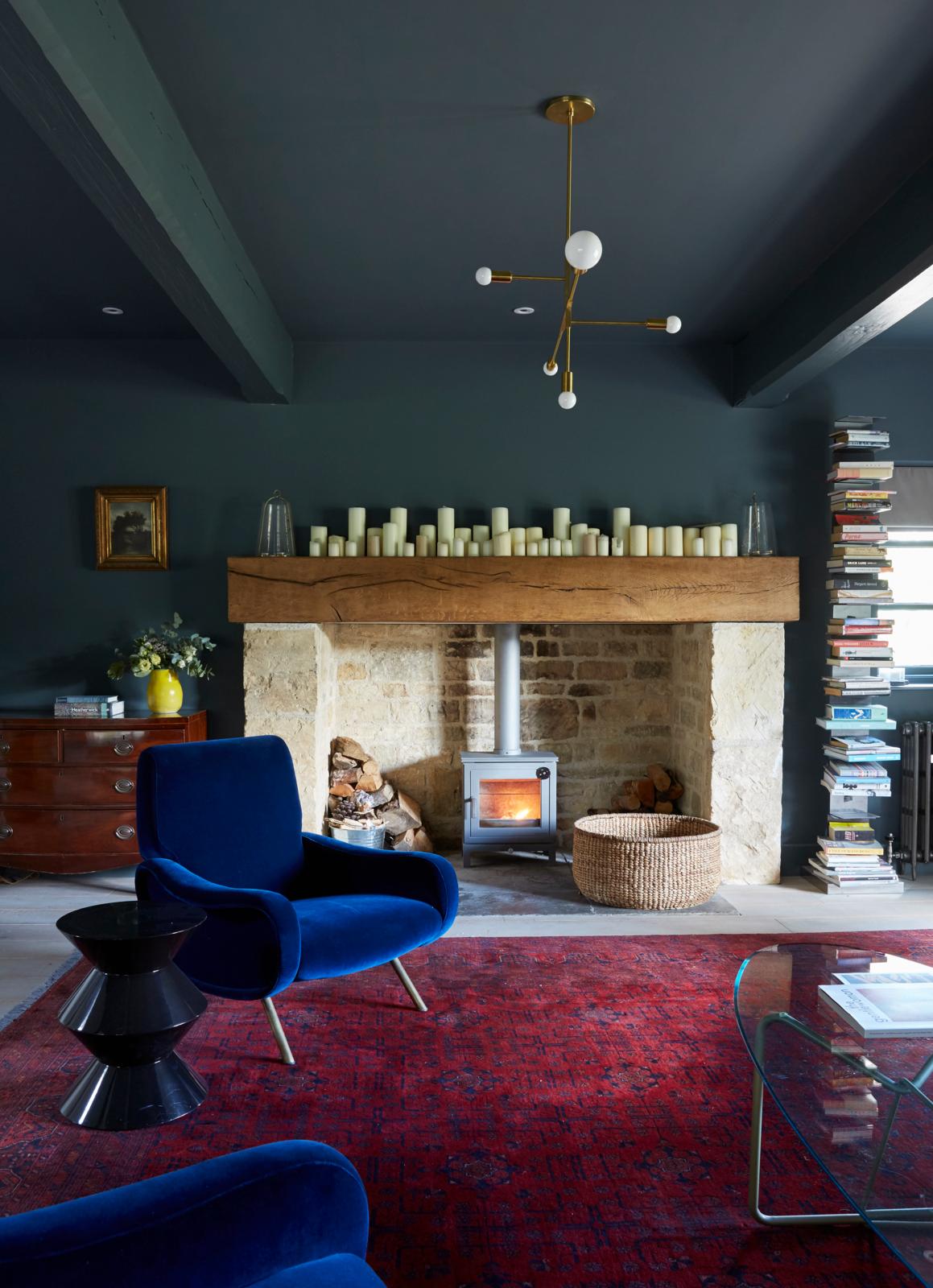
As well as the rug fibers, focus on the pile. “Since living rooms typically see less traffic than other areas, this is a great opportunity to choose a rug with a bit more texture,” says interior designer Becky Shea. “I often lean toward shaggier options, as they feel luxurious underfoot and add warmth.”
Pile can make a difference to living room ambiance, points out Sally Pottharst. “Ask yourself what type of energy you want to imbue — is it energetic and convivial or a space for restoration and repose? Reflecting on how the room will be utilized by different people at different times of the day will guide how you want the rug to feel, both underfoot and to the touch when you’re sitting on it. Traditionally, a thicker pile feels more casual, inviting people to linger.”
“For a more formal living room I might have a cut pile rug in a low to medium pile height, or a combination of a cut pile and flat-weave ground,” says rug designer Christine Van Der Hurd. “The fibers could be in silk, wool or linen, or a combination of two different fibers. For a more casual country house I may use a flat weave in a wool or hemp, with or without a pattern depending how much pattern is already going on in the room. Hand-spun hemp dyes beautifully and is a wonderful and cost-effective way to bring some colour and texture onto the floor.”
And make sure your choice complements the overall design, says Gemma Tucker, founder of Balance Interiors. “For example, if you prefer a cozy, rustic farmhouse living room vibe, a chunky woolen rug will fit the bill, whereas for boho vibes, a Kilim or Beni Ourain will serve you well.”
We love Ruggable's collection of boho rugs.
4. Weigh up how it’s made
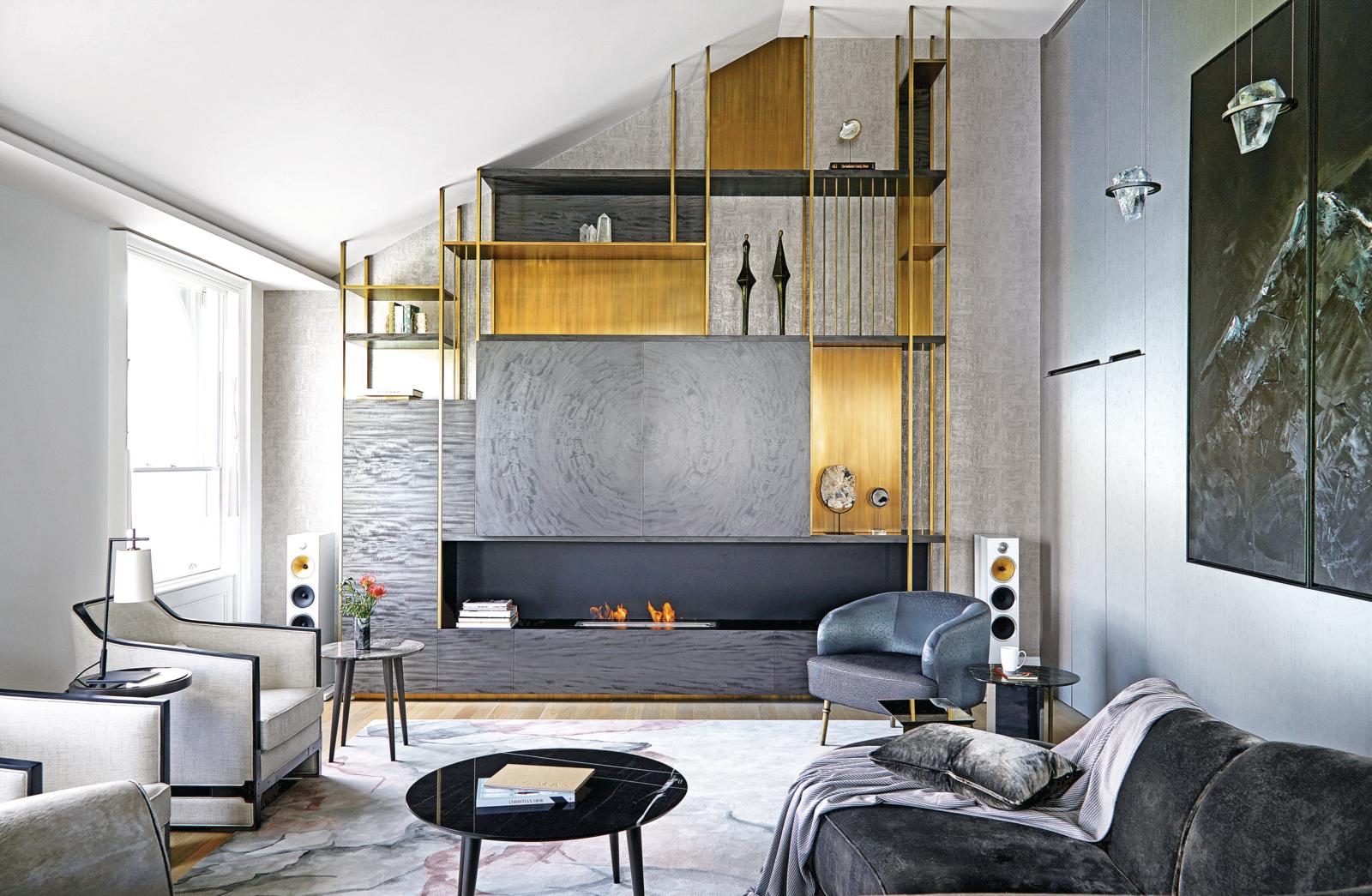
If you’re considering a patterned rug, be aware that these can be either woven or printed versions.
If your choice is for the long term, the former can serve you well. “Woven patterns provide a richer texture and a more durable design,” says Victoria Holly of Victoria Holly Interiors. “Woven rugs age beautifully.”
Consider edging, too, she advises. “We recommend looking for rugs with a hand-serged edge rather than machine-serged. Hand-serging gives a more refined, artisanal finish, enhancing the rug’s overall quality and longevity.”
Take a look at these beautiful woven rugs on Anthropologie.
5. Focus on color
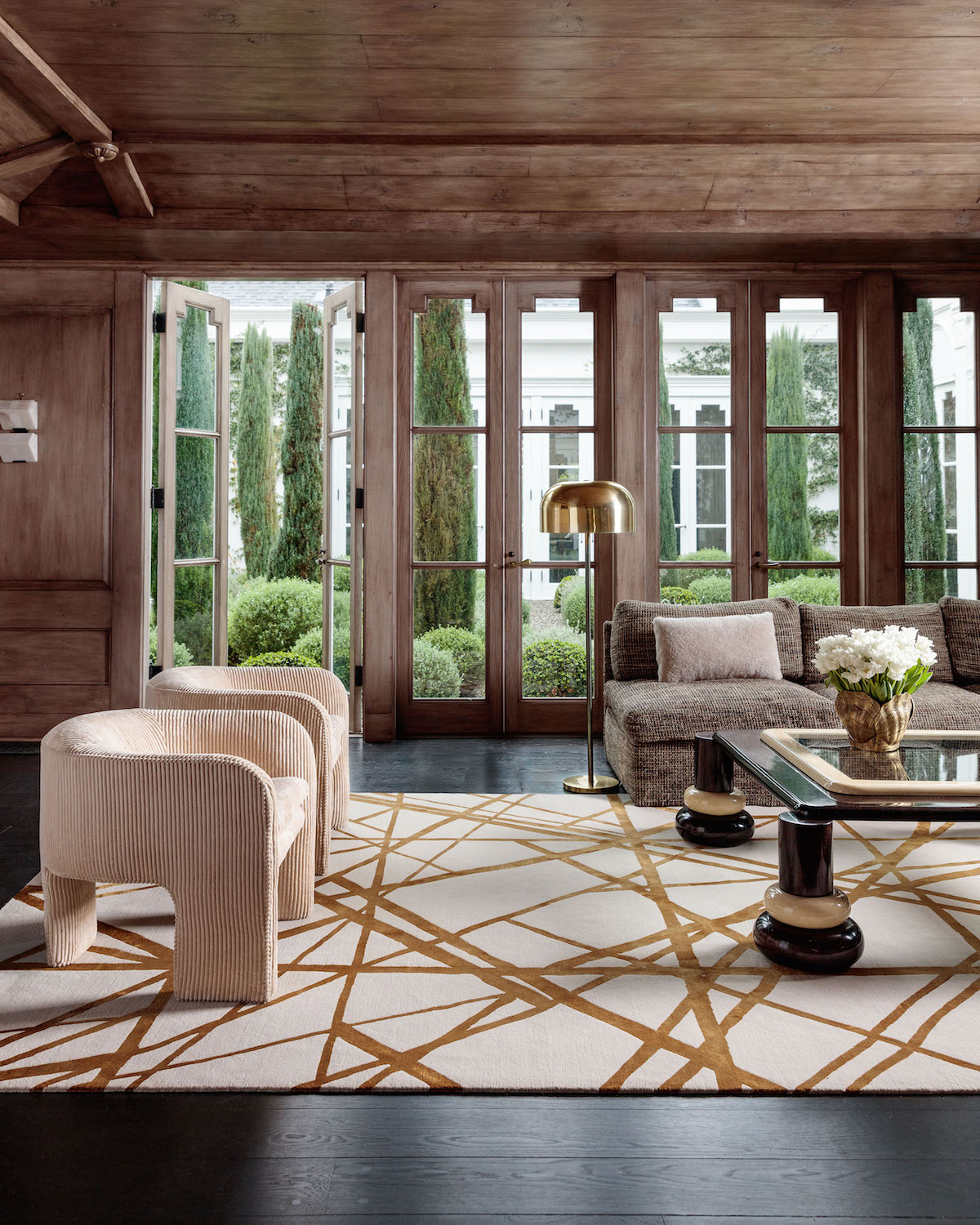
When you’re selecting a rug pay attention to its potential within the living room color palette. “Color can really change the mood, energy, and emotion of a room but it’s very much a matter of preference — what might feel trendy to one person will be timeless to another,” says Jodie Fried.
“A lighter color will create a sense of spaciousness while a darker, contrasting hue feels cozy and intimate. Something muted or monochrome can balance out lots of statement pieces, whereas a conversation-starting colorway can enliven a pared-back space.”
The light that reaches your room is also important. “Always take into consideration the access to natural light in the room — the more light, the better opportunity for the darker, deeper colorways,” says Liza Berglund Laserow, co-founder of Nordic Knots. “If you’re more into lighter tones, an alternative way of working around this is painting the floor in a dark color, which adds a foundation for a lighter rug.”
Going for a colorful rug? “You’ll want it to be the focal point of your room,” says Irene Gunter, founder of design studio Gunter & Co. “For this reason, I suggest sticking to a neutral color palette for the rest of the space. This allows the eye to be drawn to the star of the show — the rug!”
To pull together a colorful rug and a beige living room, or one with another pared-back palette, add accents. “So that your rug doesn’t look at odds with the rest of the space, pull a color from the rug’s pattern and repeat it on a smattering of accessories,” Irene says. “To tie your scheme together, it’s not necessary to color-match everything. Source accessories in a slightly darker or lighter shade of your key color to keep things interesting. You could even work with a mixture of both.”
Check out Urban Outfitters' collection of colorful, patterned rugs.
6. Size it right
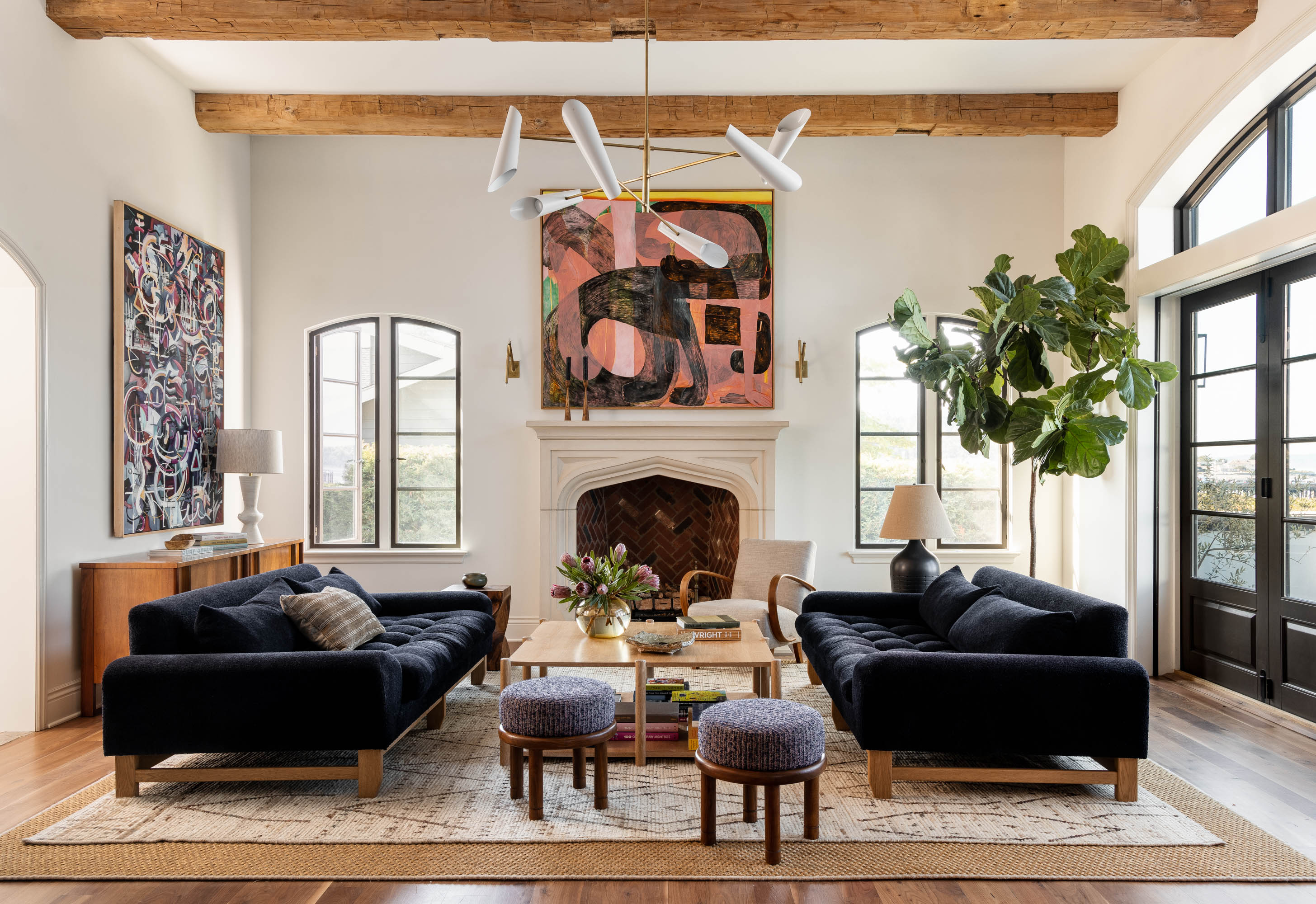
Never be mean with the living room rug size. “Go big — or at least as big as you need,” says Liza Berglund Laserow. “Having a rug that is too small is equal to pants that are too short. Not chic!”
However, that doesn’t equal covering the whole floor. “A rug should be large enough to anchor your furniture whilst leaving some of the floor exposed,” says Sally Pottharst. “Aim for a rug that will fully fit all your furniture, with at least 8 inches of rug visible on all sides. If that’s not possible, arrange furniture partially on top with the rug sitting underneath the front two legs of your sofa and side chairs.”
7. Mark out the area
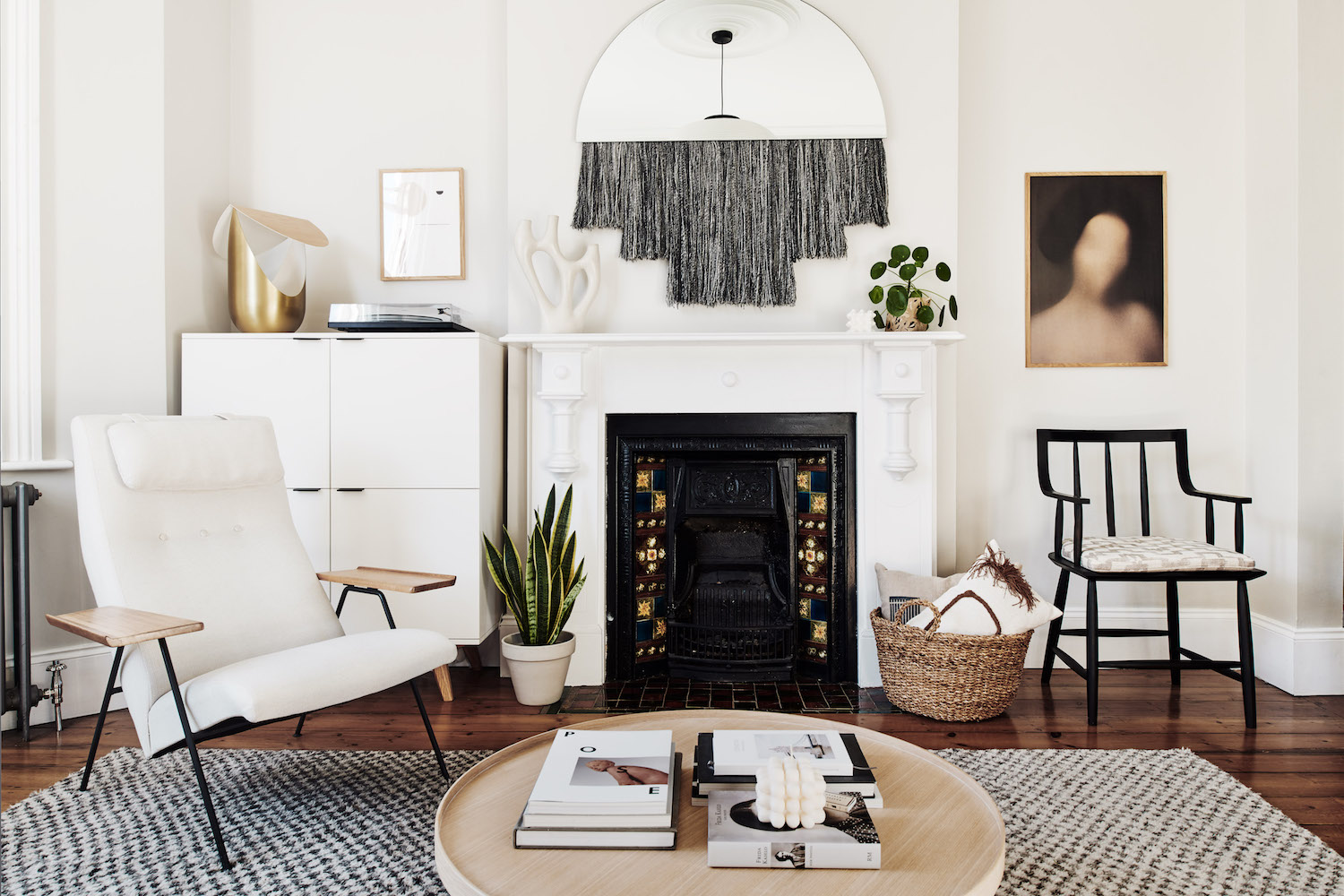
As well as measuring your room, it's worth marking out the the area you want the rug to lie over to get a feel for how much of the floor it will cover.
“If you have nice floors, you won’t want to cover them up entirely,” says Sheena Murphy, founder of interior design studio Nune. “But, equally, a rug should sit firmly under your main upholstery pieces in the room, whether that’s a sofa, chairs, or both, and it should be large enough to be a visual anchor in the room. Check the dimensions of anything you’re considering and tape the corners out in your room to ensure it feels right before you buy.”
Christine van der Hurd suggests actually modeling the scale first when you’re designing a living room. “Before buying a rug I often suggest taping newspaper or brown paper together to create an area that represents the rug that you feel works best for the space,” she says. “For the living room I would suggest placing the furniture completely on the rug or partly under the front legs as opposed to in front of the sofa, it will really help to pull the room together.”
8. Select samples and create a moodboard
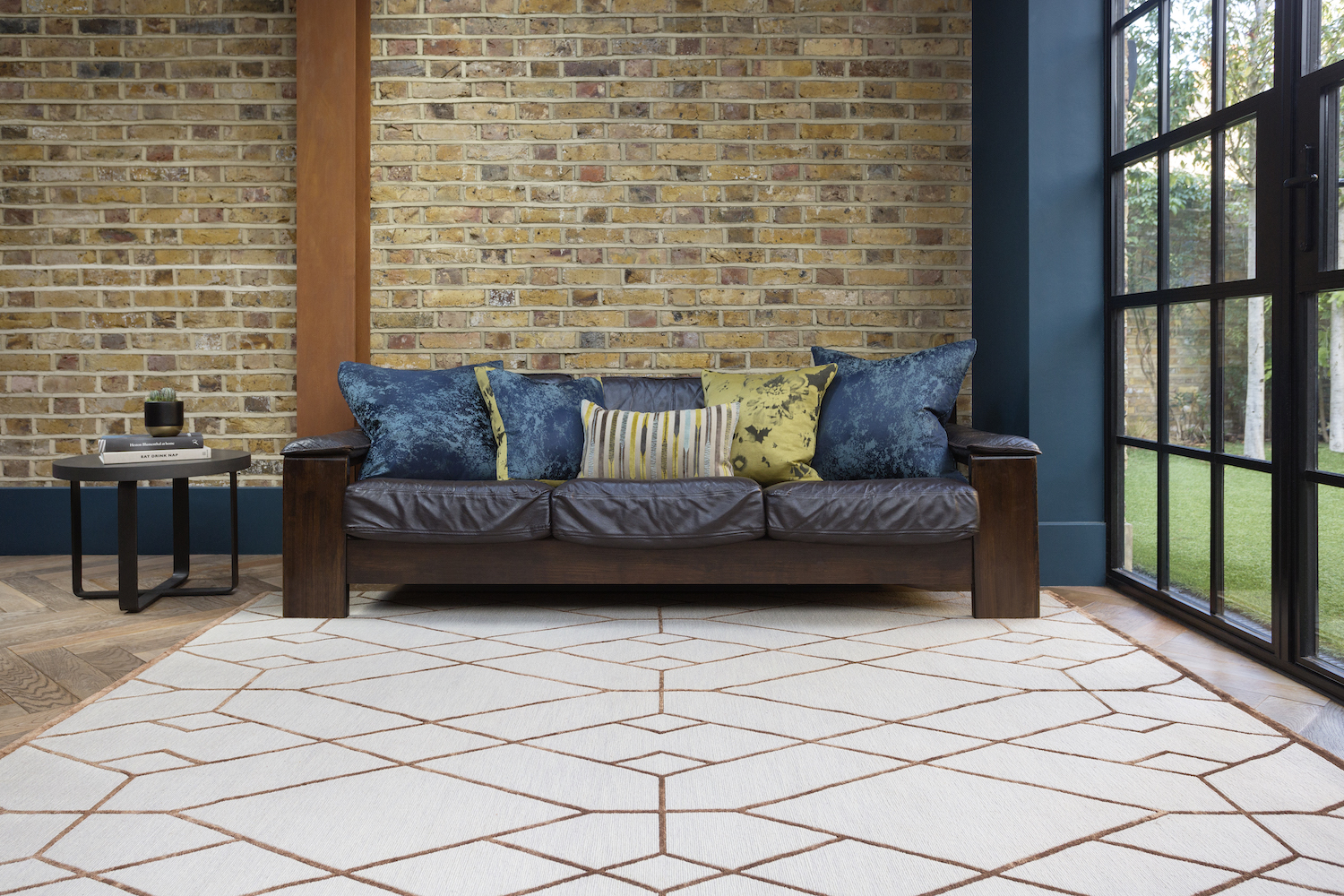
Unless it’s the starting point for your scheme, gather samples of the colors, tones and textures of the other elements of the room, from the living room furniture to the shade of the walls.
“Ideally, you’d get a sample of the rug or rugs so you can look at it against everything else in the space or alongside samples of other pieces going in the same room,” says Sheena Murphy. “If that’s not possible, you could create a simple moodboard with pictures of everything in the room to ensure, as best you can, that all the tones and textures all feel good together.”
Alternatively, take a moodboard with you when you go rug shopping. “If you have an existing living room design scheme and are looking to coordinate a rug with the space, it can help to create a moodboard of all the surfaces, shapes, fabrics and finishes you are working with,” says Caroline Milns, head of interior design at Zulufish. “Take these with you when choosing to ensure a new rug will work in your space.”
9. Balance texture and tone
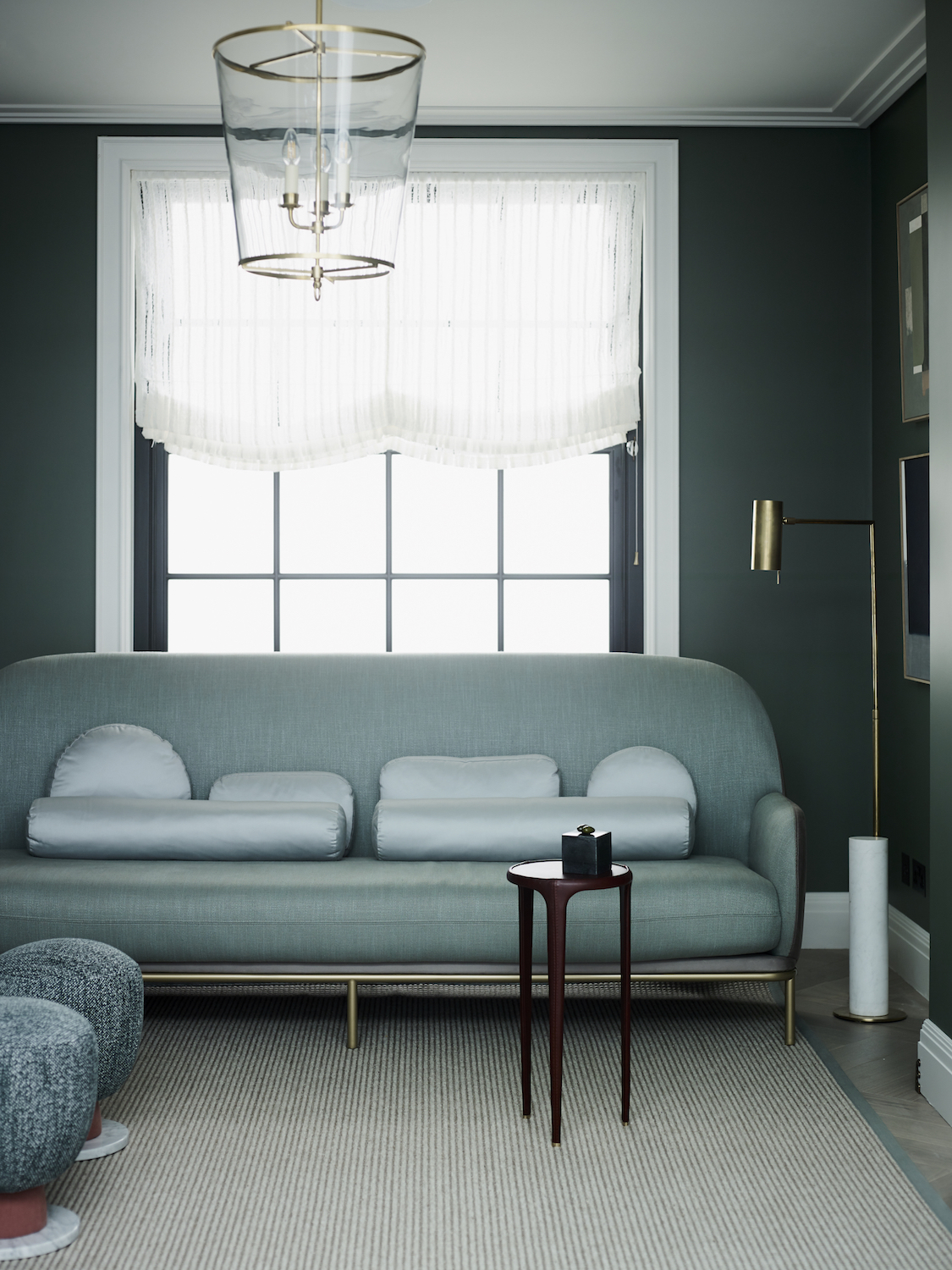
Opting for a neutral rug with a rich texture will add another dimension to your living room. Choose one with a hint of coordinating color as it will complement your scheme better. Cohesion like this is a key part of current living room trends.
“While a rug may be plain, if it’s textured it can be super luxurious underfoot so look for a high-quality rug that feels fabulous,” says Irene Gunter. “Always weigh up the pros and cons of the material your rug is made of. For example, when silk is used in a rug, the color changes drastically depending on the direction of the warp and weft. Another way to add interest with a neutral rug is by choosing a contrasting binding. Our projects often require bespoke rugs, which allows us to choose the perfect border.”
You can find a great selection of jute rugs on H&M Home.
10. Choose the best way for pattern to lie
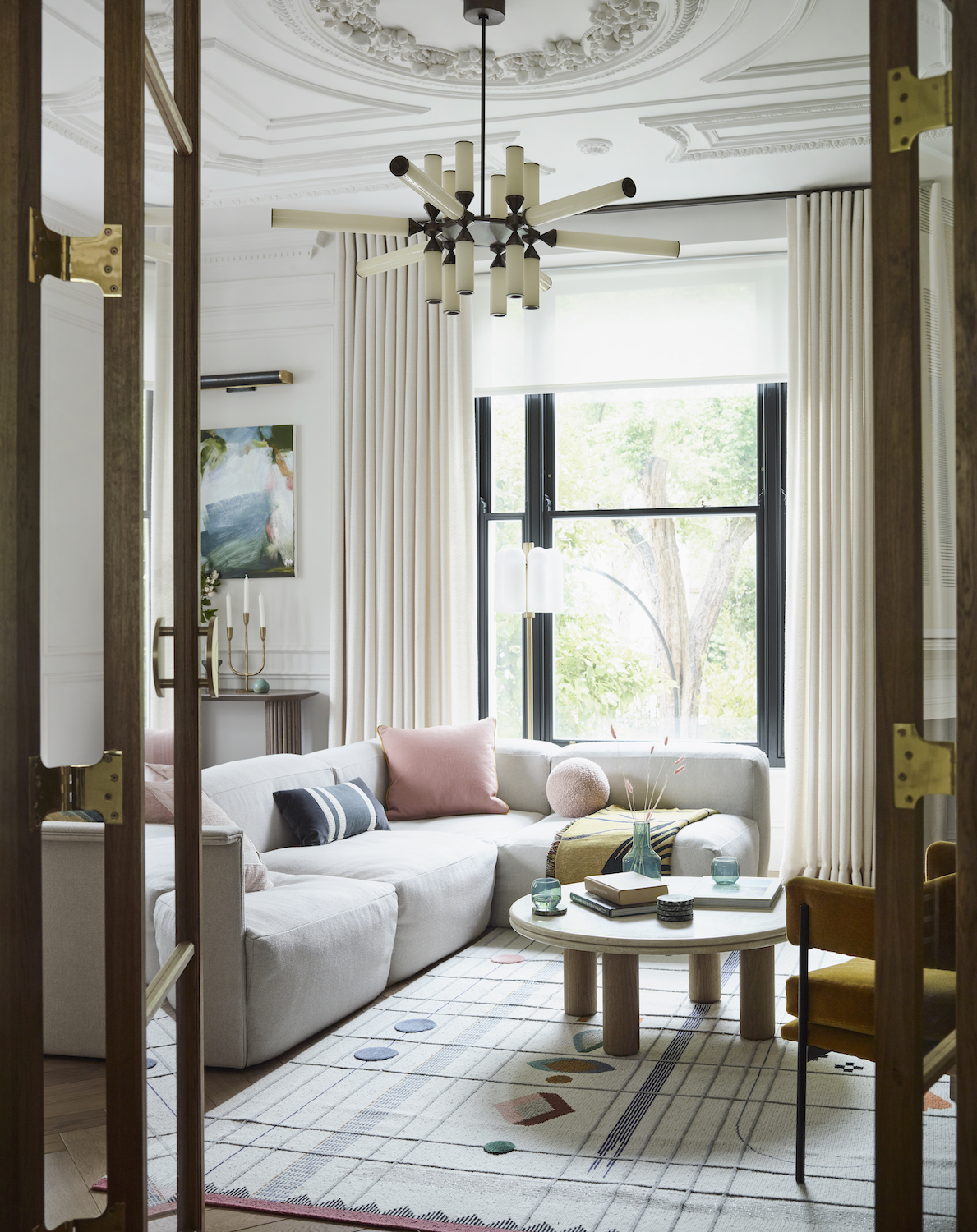
If the rug you’ve chosen features an eye-popping pattern, keep your walls and furniture a solid color and consider how and where it will lie so that the rug can work its magic.
“If you’re thinking of a patterned rug with a bold motif, always consider the direction of the pattern,” says Irene Gunter. “Is it best viewed as you walk into the room, or when you are seated? The same goes for strong directional patterns — do you want the zigzags or the stripes to run widthways through the room or straight in and out? Spend a little time playing around with your rug to see what looks best.”
You can find lots of beautiful patterned rugs on West Elm.
11. Opt for an abstract or arty design
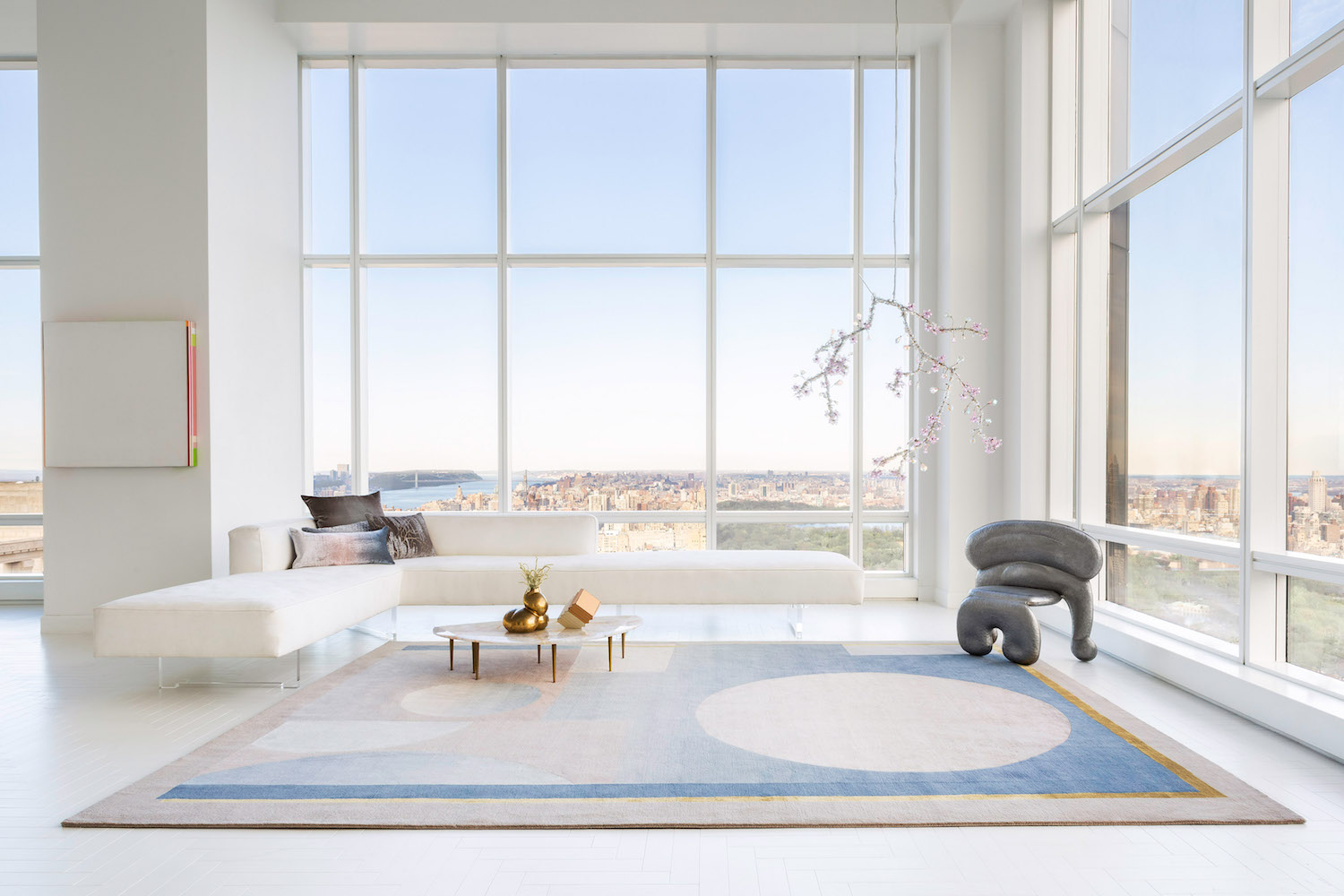
According to Karolien van Cauwelaert and Karin van Opstal, authors of the book Carpets & Rugs, available from Amazon, mid-century artists such as Jackson Pollock and Mark Rothko have been a huge inspiration to the world of interior design, including carpets and rugs.
“The last few years in particular have seen a huge surge in the production of abstract, arty carpet designs, thanks to a rapid improvement in rug design technology,” they say. “The latest technologies now enable designers to experiment with countless colors and crazy shapes. Their creations are all about flow, color, and movement and can create a wonderful dynamic in otherwise static spaces.
“An arty rug can bring a wonderful splash of vivid color to minimalist houses and rooms furnished in muted, classic colors like beige, gray, and greige. It’s a personal choice but, generally, an arty carpet with a bold design will come into its own when it is given ample space.”
For a rug similar to the one shown in the picture above, Wayfair has a brilliant selection of abstract area rugs.
12. Try a circular rug
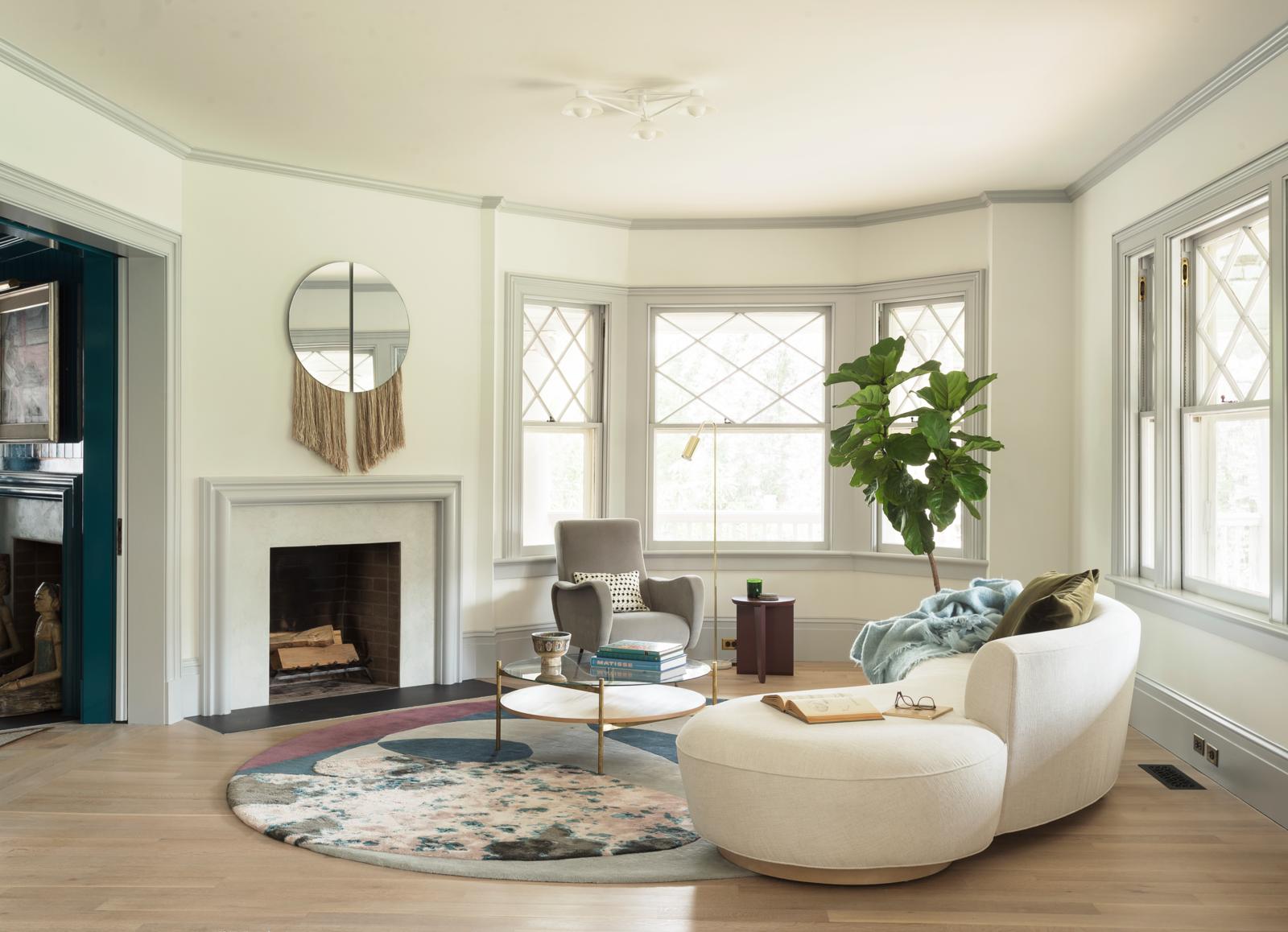
Curves and arches are a huge interior design trend with wavy lines and rounded edges often favored above sharp corners. This has been reflected in the designs of the rugs on offer too, with circular, oval, and even irregular shapes seen in the latest collections.
“What I love about a round rug is that it adds visual harmony to a room that‘s irregular in shape or already has a lot of curvy furniture,” says Jodie Fried. “As a bonus, it doesn’t matter if it fits the space precisely. With a rectangular or square rug, the rug has to be the right size to be in proportion with the space otherwise it will look out of place. A circular rug is more forgiving in this sense.”
“The default rectangle is of course fantastically flexible, but a circular rug can work well with an L-shape or curved sofa, creating interesting and dynamic spaces,” says Caroline Milns. “If you’re lucky enough to have architectural details in your living room such as archways or a bay window, it’s wonderful to mirror these shapes in your choice of rug.”
Pottery Barn's selection of round rugs includes all the patterns, colors, and textures you could want.
FAQs
How do I choose a rug for my living room?
“The scale, tone and materials should all be considered in equal measure,” says Sheena Murphy, founder of design studio Nune.
“It’s important to consider how your rug will integrate into the space,” adds Caroline Milns, head of interior design, Zulufish. “Where will your coffee table or sofa sit, how will the pattern be affected, and what elements of the pattern or design will be covered? Opt for a design with a range of colors, making it easier to coordinate a range of fabrics and furnishings.
“Even if you're looking to include a rug in a solid color, go for a design made up of multiple thread tones which will give flexibility when it comes to the rest of your scheme.”
How do I know which rug to choose?
“Your living room rug is an important piece in your interior scheme and you would hope to live with for a long time, so I would be sure to choose a long-lasting natural fiber like wool or silk and one which can easily be cleaned by a professional,” says rug designer Christine Van Der Hurd.
“If your living room has many patterns within the fabrics, wallcoverings, and pillows, an interesting plain colored flat-weave texture or cut pile with a stitch detail or contrast binding will work well.
“Although a play on patterns is also wonderful, so you could choose some of the colors and design elements found in the fabrics or wallcovering and bring these into the rug. We love playing with different scales and reinterpreting a pattern, which may have been used somewhere else in the interior.”
Sarah is a freelance journalist and editor. Previously Executive Editor of Ideal Home, she’s specialized in interiors, property and gardens for over 25 years. She’s written for websites including Houzz, Channel 4’s flagship website, 4Homes, and Future’s T3; national newspapers including The Guardian; and brands including Future’s Homes & Gardens, Country Homes & Interiors, Homebuilding & Renovating, and Period Living, as well as House Beautiful, Good Homes, Grand Designs, Homes & Antiques, and The English Home among others. It’s no big surprise that she likes to put what she writes about into practice, and is a serial house renovator.
- Jacky ParkerContributor